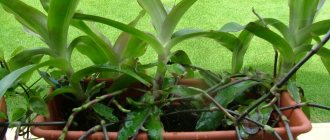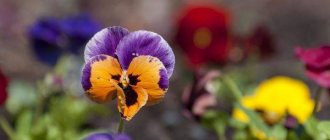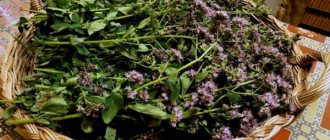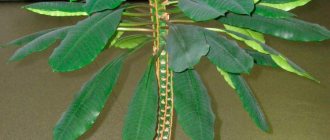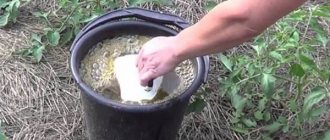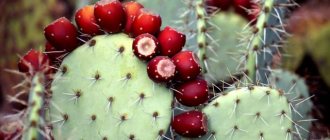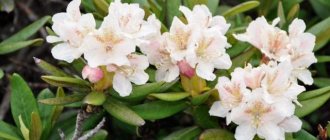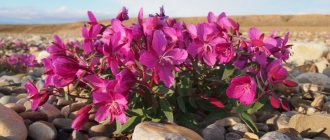The article was prepared by a specialist for informational purposes only. We urge you not to self-medicate. When the first symptoms appear, consult a doctor.
Purslane is an annual plant distinguished by fleshy, opposite, oblong, thick leaves and branched, recumbent, sometimes ascending and erect stems. Small yellow flowers are collected in bunches. The fruit is spherical or ovoid; dark brown seeds ripen in it. The plant blooms from June to September. Purslane lives in fallow lands, wastelands, and river valleys. Its habitat is Russia, the North Caucasus. Purslane is grown by gardeners as a vegetable.
This annual plant is found in abundance in garden plots and wastelands in southern Russia. The tradition of using purslane as a medicinal plant dates back to the times of Hippocrates and Pliny. These great healers recommended its use to the elderly and debilitated, as well as to those recovering from a serious injury. Arabic poetry of the Middle Ages praised purslane, calling it a “blessed herb” for its unique medicinal properties.
Purslane is widespread in Central Europe, Asia, and Mediterranean countries. It is found in fields, lawns and garden beds. Professional agronomists and home gardeners usually consider purslane a weed. Undeservedly and mistakenly, they try to get rid of it in every possible way. The study of purslane has opened up many possibilities for its use for medicinal and culinary purposes.
Snake and insect bites, sleep disorders and vitamin deficiencies, intestinal disorders and liver diseases - the wide range of uses of purslane as a healing agent has made it a very important crop. Purslane was not neglected in Russia either - in the diet of the inhabitants of monasteries it was used as a means to reduce potency, and also promoted the healing of wounds and relieved inflammation. In addition, it turned out that purslane also has culinary benefits. Its sour-tart taste still complements the bouquet of some dishes of French and Armenian cuisine. Purslane is used in salads and hot dishes; pickles and marinades are prepared from it, which are in no way inferior to delicious capers.
Purslane
- Pickled purslane
Useful properties of purslane
The medicinal properties of purslane have been used since ancient times; Hippocrates recommended this plant for many diseases. Its beneficial properties are truly limitless. Juicy greens contain vitamins of group A, which combine substances with common biological effects. The plant contains vitamins B, K, PP, and E.
Thanks to the organic acids present in the plant, normal metabolic processes in the body are maintained. The use of a medicinal plant helps to saturate organs and systems with salts of calcium, potassium, magnesium, etc. The leaves contain vitamin C, carotene, and flavonoids. Purslane is an excellent supplier of mucous and resinous substances.
In medicine, purslane has found use in relieving headaches, coughs, arthritis, and in treating problems of the gastrointestinal tract, liver, and shortness of breath.
Purslane-based products are prescribed for:
- Muscle relaxation.
- Softening and healing of skin with psoriasis, weeping wounds.
- Gentle bowel cleansing.
- Relieving symptoms of inflammation.
- Improvement of the myocardium.
- Diuretic effect.
- Detoxification after insect and snake bites.
- Improvement of the oral cavity for stomatitis, periodontal disease, sore throat.
Recent research by scientists has proven that purslane has a therapeutic effect in psoriasis, and also restores bone density in osteoporosis.
Studying the composition of purslane yielded unexpected results. It turned out that the nutritional value of the plant is not inferior to the main vegetables that we are used to seeing on the table. Purslane contains a high concentration of vitamin C, beta-carotene, and alpha-linolenic acid [1].
Nutrient and antioxidant compounds explain the high energy value of this seemingly unremarkable plant [2].
The concentration of nutrients and the medicinal properties of purslane are influenced by the growing conditions, variety and harvesting period of the plant [3].
In traditional Chinese medicine, purslane is used in the complex treatment of diabetes and hypertension. No special studies have been conducted on the antidiabetic effectiveness of purslane, but this has not in any way affected its popularity among people with diabetes. However, laboratory experiments were carried out with the participation of animals. One of them revealed that raw purslane polysaccharides can have a hypoglycemic effect in sick rodents [4].
Rich in vitamin A. Purslane has a strong antioxidant effect due to its high level of vitamin A. Its level in purslane is the highest among all green leafy vegetables. This vitamin compound has a positive effect on vision, heals mucous membranes, and protects the oral cavity and lungs from oncological processes.
Purslane contains high concentrations of vitamin C, B vitamins (riboflavin, niacin, pyridoxine), magnesium, calcium, phosphorus and iron.
Source of Omega-3. Purslane has long been considered one of the best sources of plant-based omega-3 fatty acids. Its active components can influence the level of total cholesterol and triglycerides. Along with reducing “bad” cholesterol, purslane increases the levels of “good” cholesterol - high-density lipoproteins.
The ability of omega-3 acids to reduce blood viscosity is known, which is very important in the presence of problems with blood vessels. Regular fish oil contains a certain amount of cholesterol and calories. Purslane is completely free of cholesterol, and 100 g of fresh greens contains only 20 calories.
Among all types of purslane, green, golden, and large-leaved golden are distinguished. Each of the plant varieties contains plant omega-3 acids and prevents the development of heart disease and various types of cancer [5].
To obtain maximum benefits in the form of sufficient amounts of omega-3 acids and minerals, purslane is consumed like green leafy vegetables [6].
Plant fatty acids are an essential component necessary for the synthesis of hormones. With their help, the body is protected throughout its life from malignant tissue degeneration, heart and vascular diseases, and chronic inflammatory processes. A number of enzymes present in omega-3s help maintain nutrient homeostasis in tissues.
Compared to spinach, purslane contains several times more valuable amino acids, vitamins, and ascorbic acid. It is superior to flaxseed oil in terms of the level of valuable fatty acids.
Chemical composition
Calories 16 Kcal
- Fat:
0.1 g - Proteins:
1.3 g - Carbohydrates:
3.4 g - Water:
93.8 g - Ash:
1.4 g - Fiber:
n/a
| Vitamins and fats | Quantity | % RDN |
| Omega-3 | 900 mg | 82% |
| Vitamin A (retinol) | 396 mcg | 44% |
| Vitamin C (ascorbic acid) | 21 mg | 23% |
| Vitamin B2 (riboflavin) | 0.112 mg | 9% |
| Vitamin B6 (pyridoxine) | 0.073 mg | 6% |
| Vitamin B1 (thiamine) | 0.047 mg | 4% |
| Vitamin B3 (PP, niacin) | 0.480 mg | 3% |
| Vitamin B9 (folic acid) | 12 mcg | 3% |
| Minerals (per 100 g): | Quantity | %RDN |
| Iron | 1.99 mg | 25% |
| Magnesium | 68 mg | 17% |
| Manganese | 0.30 mg | 13% |
| Copper | 0.11 mg | 13% |
| Calcium | 65 mg | 7% |
| Phosphorus | 44 mg | 6% |
| Selenium | 0.9 mg | 2% |
[Video] Purslane - food, healer, hormone of happiness and joy:
Growing purslane from seeds: when to plant
You can grow garden grass from seeds on any soil, even the poorest. But in order for it to form large edible parts, they use plots of land on which early vegetable crops grew as predecessors. Usually mineral fertilizers are added to the soil under vegetables. They are not completely consumed by plants; the roots of purslane extract the remaining nutrients and use them to build up their own green mass.
Ageratum - growing from seeds, care and planting
Deciding when to plant herb seeds for culinary purposes can sometimes be difficult. In outdoor conditions, night frosts occur on the soil even in May. Portúlaca seeds and seedlings cannot withstand even low positive temperatures, let alone sub-zero ones.
Note! Grass seeds cannot be planted even to a depth of 1 cm, they simply will not sprout, so they are scattered superficially.
Therefore, they either take measures to protect the beds with sown seeds from the cold, or sow the seeds when stable heat sets in, or use the method of growing seedlings.
Medicinal properties of garden purslane
Although there are several varieties of purslane, purslane is used for medicinal purposes.
Its characteristic species characteristics:
- Juicy small fleshy leaves of a rounded-oblong shape;
- Succulent stems of a reddish hue, creeping along the ground;
- Small yellow flowers located in the axils of the leaves appear from June to August;
- Small black seeds ripen in spherical polyspermous capsules;
- Reproduction occurs by self-sowing.
The beneficial properties of this plant are due to its unique chemical composition.
Substances contained in purslane:
- Carotenoids (beta-carotene, lutein) are precursors of vitamin A;
- Carbohydrates (sucrose, glucose, galactose, fructose, maltose) are fuel for cells;
- Coumarins – prevention of thrombosis, anticoagulant;
- Organic acids (oxalic) – stimulation of metabolic processes;
- Flavonoids;
- Mineral salts (magnesium, calcium, potassium);
- Vitamins and antioxidants – normalization of blood clotting, activation of metabolic processes;
- Macro- and microelements.
The unique composition of purslane has provided it with a strong position in folk medicine as a remedy for the treatment of many diseases.
Therapeutic effects of purslane:
- Antioxidant,
- Diuretic,
- Antimicrobial,
- Antitoxic,
- Hypoglycemic,
- Antiulcer,
- Anti-inflammatory,
- Antihelminthic,
- Laxative,
- Regenerating.
All parts of the plant except the roots are used for medicinal purposes - flowers, stems, leaves, and seeds.
The use of purslane for the treatment of diseases:
- For neurodermatitis and psoriasis of the scalp, lotions with an infusion of the plant relieve itching, flaking and swelling;
- Cholesterol levels return to normal;
- Glucose levels are normalized;
- For cystitis and urethritis, the diuretic and anti-inflammatory properties of the plant appear;
- Infusion and decoction of plant parts is used for cholelithiasis and liver diseases;
- Cardiac activity is normalized;
- Inflammation of the gums is stopped, conjunctivitis is treated;
- Due to the properties of purslane to cause spasms of smooth muscles, it effectively treats helminthic infestations: ascariasis, hookworm, affecting the muscle tissue of parasites;
- Honey with crushed purslane seeds helps with asthma;
- You can get rid of warts by rubbing them with fresh plant juice;
- You can get rid of the consequences of a bee sting by applying a purslane leaf to the sore spot;
- The effect of purslane on the adrenal cortex stimulates the release of insulin and lowers blood sugar levels.
It is not difficult to prepare an infusion of purslane; for this you take 2 tbsp. l. chopped herbs and pour 1.5 cups of boiling water. After 60 - 90 minutes, filter the infusion and use it for oral administration. In order to prevent various diseases, we take 1–2 tablespoons of infusion, in advanced stages – 3–4 tablespoons.
Contraindications to the use of purslane:
- Pregnancy, lactation;
- Heart rhythm disturbances (bradycardia);
- Autonomic vascular disorders;
- Hyperexcitability of the central nervous system;
- High blood pressure.
Description
Portulaca oleracea An annual herbaceous plant of the portulaca family, 10–30 cm high.
The root is spindle-shaped, branched.
The stem is bare, fleshy, arched, branched, often pressed to the ground or erect, brown.
The leaves are green, juicy, fleshy, green or yellowish in color, alternate, the upper ones are almost opposite, sessile - spatulate, obtuse, narrowed towards the base, oval, reminiscent of a flattened egg.
The flowers are small, white, yellow, sometimes dark brown, sessile, solitary or in bunches of two or three in the branches of the stem or the axils of the leaves.
The seeds are very small, dark gray in color.
Blooms from June to September.
Spreading
Purslane is cultivated in the south of the European part of Russia, in the Far East, Transcaucasia and Central Asia.
It grows wild on sandbanks, weedy places, along river banks, near villages, in gardens and along the edges of fields.
Application of purslane
Purslane is a useful plant in all respects, it is used in folk medicine, it is excellent as a cosmetic product, and is also suitable for consumption. Juicy green shoots for preparing salads are cut before flowering begins. Purslane has a tart and spicy taste, similar to the taste of spinach and sorrel. The healing substances contained in the plant help treat diabetes, kidney, stomach and liver diseases. It is also useful for eliminating the causes of headaches.
The miracle herb relieves inflammation in the bladder, reduces pain from enterocolitis and hemorrhoids. Decoctions have antimicrobial effects and are therefore effective for conjunctivitis and dysentery. It has been established that the plant relieves dizziness, treats hypotension, and cleanses joints of accumulated toxins that contribute to arthritis. Treatment of ulcers and lichens with herbal decoctions permanently eliminates these unpleasant diseases.
Purslane lotions relieve itching and flaking in psoriasis and quickly heal festering wounds. The fresh juice of the plant can remove warts. It normalizes the functions of the heart muscle and is a hemostatic agent. It is used in the treatment of certain sexually transmitted diseases. The juice is squeezed from the above-ground part of the plant and taken 1 tablespoon 3 times a day before meals. Traditional medicine recommends infusions and decoctions of stems and leaves for gallstone disease, to reduce blood cholesterol and prevent the formation of atherosclerotic plaques.
Pest and disease control
Purslane rarely gets sick and is not very attractive to parasites - this is another reason for its popularity among gardeners. To forget about aphids, slugs and snails, it is enough to treat the seedlings with insecticides on a schedule.
Typical diseases are associated with watering and humidity: these are various fungi and rot. Gray mold spreads if cool, rainy weather continues too long. The same applies to root rot, from which the above-ground part withers and turns yellow: if the problem is not solved in time, the plant will quickly die.
Control is very simple: do not over-water, thin out the green carpet in a timely manner, remove dead plants and weeds. If you find signs of the disease, immediately remove all damaged areas before it spreads. And during unexpected prolonged bad weather, treat the garden with special fungicides for prevention.
Photo: nookworm-connectionsmore.blogspot.com
Columnar apple tree: varieties, care and cultivation (photo)
Purslane Recipes
There are many ways to prepare medicinal products from purslane, all of them are effective when used systematically:
- Recipe for purslane infusion No. 1: pour 1 tablespoon of dry raw material with 1 glass of boiling water, leave for 1 hour, strain. It is good to use this product for rubbing into the hair roots for dandruff.
- Recipe for purslane infusion No. 2: 40 g of fresh herb should be poured into 200 ml of water, left for 2 hours, squeezed and taken with the addition of two chicken egg whites throughout the day. Treatment should be carried out for seven consecutive days.
- Recipe for purslane decoction No. 1: boil 1 tablespoon of raw material for 10 minutes in 200 ml of water, then leave for 2 hours, strain. It is recommended to take the medicine 1-2 tablespoons 3 times a day.
- Recipe for purslane decoction No. 2: 1 tablespoon of crushed dry raw materials should be boiled in 1 glass of boiling water over low heat for 15 minutes, wrapped or poured into a thermos and left for 1.5 hours. Take 1 tablespoon of the decoction 3-4 times a day before meals for arthritis.
- Recipe for purslane decoction No. 3: 1 tablespoon of fresh herb should be boiled for 10 minutes. after the start of boiling, then leave, wrapped, for 2 hours, strain and take 1-2 tablespoons 3-4 times a day for arthritis.
Herbicides
At home, it is better to use the methods described above for killing weeds. With timely and thorough agricultural practices, it is possible to clear the area of purslane without the use of pesticides (herbicides). The latter, of course, will free the area not only from purslane, but also from many other types of weeds.
However, according to experienced gardeners, the use of herbicides specifically to destroy purslane is ineffective. A waxy coating on the leaves and stems of these plants protects them from exposure to chemicals.
If you nevertheless decide to use pesticides on your summer cottage, then it is better to use herbicides that have the ability to destroy green weeds during their growing season. Such drugs include “Hurricane” and “Tornado”.
Plants treated with the solution (with fine spraying) die within 2–3 weeks. In the soil, these herbicides quickly decompose and do not accumulate. They do not cause harm to the environment (when used according to recommendations).
Purslane is one of the most weather-resistant plants.
Purslane in cooking
Purslane leaves are usually eaten, forgetting that the stem and flower buds are also edible. To prepare, use a sharp knife to cut off the juicy, green shoots at the very roots. In order to preserve all nutrients, the maximum permissible low temperatures and a short time are used. During boiling or frying, antioxidant compounds are destroyed. It is noteworthy that steaming preserves high concentrations of flavonoids, carotene and minerals.
Fresh green leaves of purslane are consumed as a salad or in the form of vegetable juice. Young greens are wonderful as an ingredient in nutritious salads. Fried, stewed purslane stems are prepared as a side dish for poultry and fish dishes.
Purslane has always been especially loved in the South Indian states. There are well-known Indian recipes for preparing purslane in combination with curries and vegetable soups, rice and finger millet pies. Many people like to mix and fry purslane with spinach and vegetables.
Pickled purslane
Liter jars are usually prepared for pickling. For one container you will need 2 bay leaves, from 2 to 4 cloves of garlic, depending on your taste preferences. The marinade is prepared based on 1 liter of water - add 20 g of salt and 20 ml of table vinegar to it.
Purslane greens are thoroughly washed, roots and dry leaves are removed and placed in a saucepan with boiling water and blanched for up to 5 minutes. The greens prepared in this way are placed in a sieve or colander to allow the water to drain completely. During this same time, the purslane has time to cool down. After this, the stems are cut into 5-6 centimeters.
Place bay leaves and garlic in clean jars, and place purslane on top. To enhance the taste and add spiciness, you can add a piece of hot red pepper or a pea of bitter black pepper. The chopped shoots are compacted tightly and poured with marinade prepared in advance. The jars are sterilized over low heat in a pan of boiling water, then rolled up with sterile lids.
[Video] Recipe for pickled purslane:
Vegetable salad with purslane
If you want to enrich your diet or surprise your guests, prepare a salad of vegetables and purslane. To prepare a nutritious and healthy dish you will need:
- 300-400 grams of purslane leaves, separated from the stems.
- 100 grams of canned corn.
- 100 grams of red onion, cut into thin rings.
- 2 eggs.
- 1 large tomato.
- Salt and pepper to taste. Instead of regular table salt, you can use sea salt.
- 2 tablespoons of any vegetable oil (nut, olive, sunflower, flaxseed).
Purslane leaves are thoroughly washed, dried with a towel, and large ones are cut. Hard-boiled eggs are chopped with a knife, the onion is cut into thin rings, the tomato is cut into large pieces or slices. All ingredients are mixed in a salad bowl. Add salt and pepper to taste. The finished salad is seasoned with vegetable oil and served immediately.
[Video] Purslane salad recipe:
Vegetable purslane pesto
To diversify the taste of your usual pasta, you can use pesto sauce based on vegetable purslane. To do this you should prepare:
- 450 g of young shoots and stems of purslane.
- 2 cloves of garlic.
- 50-70 g grated parmesan.
- 100 ml olive oil.
- 30 g roasted almonds.
Purslane is washed and dried with a towel. The greens along with garlic, grated Parmesan, and almonds are poured into a blender or food processor. In the selected device, all components are thoroughly crushed and mixed until smooth. After this, olive oil is poured into the mixture and stirred again for about a minute.
The finished pesto is transferred to a glass container and stored tightly closed in the refrigerator for no more than 14 days. Purslane pesto can be used as a spread on sandwiches, added to pureed soup, and vegetable dishes.
[Video] Awesome purslane! Prepare it like this:
What is purslane?
Purslane is a green leafy vegetable that can be eaten raw or cooked. This is a succulent annual creeping plant measuring approximately 40 cm in height. It requires relatively little water and soil nutrients, does well in sunny climates and can grow in all types of soil.
Purslane can often be found in cracks in sidewalks and roadways, even during the summer heat. It grows in containers, flower beds, gardens, fields, vacant lots and roads.
The plant has a tap root with fibrous secondary roots. It can tolerate poor compacted soils and drought. The stems are fleshy and watery, smooth, reddish-green to purple-red in color. They branch and often form round mats 30 - 60 cm in diameter or more.
Purslane is sometimes compared to an invasive weed because it is a wild succulent plant, but is nonetheless completely edible and very tasty. This plant contains about 93% water.
The distinctive feature is the red stem and small green leaves that look extremely delicious. The leaves are oblong, wedge-shaped and dark green in color.
They have a slightly sour or salty taste, similar to spinach and watercress. They are added to soups and French fries for a bit of a spicy kick. The juicy leaves are added to salads to add texture to the dish.
Purslane flowers are small, yellow, single or grow in clusters. They are located above the last leaves on the branches and are up to 6 mm wide. They bloom in June and July.
Later flowers produce a small green, ovoid or pear-shaped seed capsule consisting of nearly oval, wrinkled seeds with a black and whitish scar at one end.
Planting and caring for purslane
The grass is grown as a vegetable and medicinal plant; it is an excellent decoration for any garden. Purslane is a heat-loving plant and can easily tolerate drought.
Growing purslane from seeds is a real pleasure; all seeds provide excellent germination and no special soil care is required. In order to obtain seedlings, seeds are sown in April. The grass prefers moderate watering. It also propagates by cuttings. To do this, the mother plants are transferred indoors for the winter, the shoots are cut off in the spring and planted in loose sandy loam soil.
In regions with short summers and cool climates, it is grown through seedlings or sowing in the ground.
Purslane is sowed at a time when there is no longer any fear of return frosts, on light soils and in a sunny place. Seeds are sown in rows to a depth of about 1 cm, embedded in the soil. The distance between rows is 50 cm. Shoots with 2 leaves are thinned out, leaving 1 plant at a distance of 10 cm.
Further care for purslane seedlings:
- Regular watering
- Loosening row spacing,
- Weeding,
- Fertilizing with complete mineral fertilizer.
Growing purslane through seedlings will speed up its ripening time. Seeds are sown in containers in late March - early April. Watering and fertilizing seedlings is similar to caring for purslane in open ground. The seedlings are ready for planting in open ground 25 days after germination. Return frosts by this time should no longer threaten the plants.
Purslane shoots are cut 3 weeks after germination in open ground or 10 days after planting seedlings. From the same plant you can make 3 cuttings of shoots per season. It is advisable to prevent vegetable purslane from flowering to use it for medicinal or culinary purposes, as the plant acquires a sharp pungent taste and its leaves become hard.
[Video] Purslane from sowing to flowering:
general characteristics
Ground cover purslane is more of an ornamental weed, the beauty of which was appreciated by flower growers and was able to be used for its intended purpose. It is sown on alpine hills in landscape design, in rockeries, in containers, flowerpots and border compositions.
The Latin name portula symbolizes the open gate, which resembles the seed pods of a flower. It came to us from the American continent and spread throughout Europe in the Middle Ages. It was even believed that it healed all diseases: for example, severe wounds or snake bites.
Photo: 2sotki.ru
How to remove purslane from the garden?
Wild purslane is capable of filling the entire space of a personal plot with its shoots, leaving no chance for cultivated plants to fully develop. One gram of seeds of this annual contains more than 3 thousand pieces. The exceptional germination power of the seeds of this plant requires the use of special measures to protect against it. To prevent purslane seeds from germinating for another 10 years in a row, special measures must be taken to neutralize them.
Mechanical measures to control purslane seedlings:
- Deep digging of the soil - carried out in early spring or late autumn, when the seeds fall deep into the soil and have no chance of sprouting.
- Mulching seedlings - adding a layer of mulch from bark, straw, fallen leaves, mown grass under the roots of cultivated plants, as well as covering the soil with black film or covering material.
- Regular weeding is carried out manually from April several times during the growing season.
Removed weeds should be disposed of in a compost heap or burned after drying.
The chemical method of controlling purslane in beds is to treat the soil after germination with systemic herbicides. Their choice depends on what is sown in the garden bed; for each type of vegetable, a certain herbicide is suitable that destroys weed seeds and does not affect the health of cultivated plants. For example, when planting carrots or onions, you can use the herbicide “Stomp”, and “Zenkor” is suitable for potatoes.
Purslane should be destroyed after it is removed from the soil. The collected weed must be treated with herbicides “Tornado”, “Napalm” or similar substances.
Unpretentious and hardy purslane is a real “pharmacy in the garden.” The main thing is to choose the right variety of this plant for cultivation. Growing vegetable purslane will provide raw materials for the preparation of medicines for the treatment of many diseases.
Mulching the soil
During the growing season of garden crops, mulching the soil after planting and watering is effective against purslane. The mulch layer should be at least 5-6 cm and, if necessary, increased to the desired height.
One-time mulching with a thin layer will not give the expected effect. High mulching (5-7-10 cm layer) can be used after autumn soil preparation and in the spring for planting seedlings. Sawdust (not coniferous, they increase the acidity of the soil, which most garden crops cannot tolerate), straw, hay, high-moor peat, etc. are used in the form of mulch.
Contraindications to the use of purslane
Purslane is contraindicated in hypertension
(purslane contains components that can provoke a sharp rise in pressure, up to a hypertensive crisis!) and low heart rate, as well as in patients with a tendency to autonomic disorders and seizures. Therefore, purslane in any form is contraindicated in patients with epilepsy. Purslane-based products can cause seizures.
Purslane herb stimulates the release of insulin and causes hypoglycemia, vasospasm, and increases blood pressure.
Pregnant and breastfeeding women should also not try purslane dishes. Active phytoelements affect the muscular wall of the uterus and cause hypertonicity, which can be extremely dangerous.
Additionally, like many leafy green vegetables, purslane contains oxalic acid. This substance tends to crystallize and be deposited in the kidneys in the form of oxalates. In 100 g of fresh purslane, oxalic acid accounts for 1.31 grams - this is more than in spinach (0.97 g). To prevent problems with the urinary system, it is recommended to drink enough water.
Although purslane is used in the treatment of diabetes, it is important to remember that excessive insulin production can cause hypoglycemia.
Chemical composition
Purslane oleracea is not widely used by traditional official medicine, however, biologists have thoroughly studied its chemical composition. They found that the green, above-ground part of the plant contains proteins necessary for human development of muscles, improvement of the composition and appearance of skin and hair, nails and skeleton.
- The components of the plant are sugars, which are a source of energy for humans.
- Microelements are represented in purslane by copper, zinc, nickel, manganese and iron.
- Macroelements – potassium, calcium, sodium and magnesium.
All of them are present in microdoses in the human body, and their absence or deficiency is immediately reflected in the deterioration of the cardiovascular, endocrine, reproductive and nervous systems, and decreased immunity.
- Organic acids contained in the plant are useful in maintaining the acid-base balance, and vitamins - tocopherol, carotene, ascorbic (C) and nicotinic acids (PP), phylloquinone (K1) - start the process of the body’s activity and fill it with energy.
- Purslane also contains alkaloids - dangerous substances, but necessary for the treatment of a number of cardiac and oncological pathologies, diseases of the nervous and respiratory systems.
- Another group of substances in purslane are glycosides and related saponins, with which you need to be careful. They affect the functioning of the heart and are irritating.
- Greens contain resinous substances and mucilages, which also have beneficial properties.
- The seeds of the plant are distinguished by their rich oil content, which, in turn, consists of fatty acids - such as oleic, linoleic, palmitic and others.
For what diseases is purslane effective?
Herbs and seeds are used in the treatment of:
- skin diseases of an infectious and metabolic nature;
- weeping, suppurating wounds;
- conjunctivitis;
- cystitis and urethritis, other inflammations of the genitourinary area;
- colds;
- reduced potency;
- dysfunctions of the liver and other gastrointestinal organs.
For preventive purposes, purslane is recommended for atherosclerotic lesions of blood vessels and cancer.
Planting in open ground
Before planting in the garden, seedlings must be gradually accustomed to street conditions. Containers with seedlings are first taken outside for 20-30 minutes, then the time they spend in the open air is extended daily. After a week, you can start transplanting. At the time of planting, the soil should be warmed up to at least 15-18 °C.
Site selection
Dandur will grow in any well-sunny, non-boggy soil. It should be borne in mind that on depleted soil it will not become juicy and fleshy enough to be used for culinary purposes. Therefore, to grow edible purslane, select an area with fertile soil or fertilize the ground in advance with organic substances - rotted manure, bird droppings, humus.
Transfer
Transplantation is carried out in pre-marked beds. A free space of about 30 cm is left between the holes on all sides. Purslane seedlings have a very good survival rate, but it is still better to plant each bush so as not to injure the root system.
Important! After planting, each plant is watered, and the soil around each bush is compacted.
